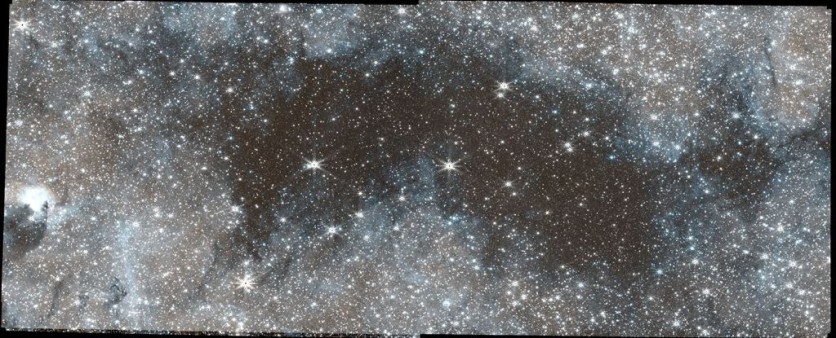NASA's James Webb Space Telescope has found something weird inside the "brick" of the Milky Way Galaxy.
In a recent study led by University of Florida astronomer Adam Ginsburg, a team of researchers uncovered intriguing findings about a mysterious dark region at the center of the Milky Way called "The Brick."
The turbulent gas cloud, named for its opacity, has long puzzled scientists due to its unexpectedly low star formation rate.

Unraveling the Mysteries of 'The Brick'
Ginsburg and his team turned to the James Webb Space Telescope to unravel the mysteries within "The Brick." The results of their observations present groundbreaking implications, challenging existing theories about star formation.
The Brick, which is recognized for its dense gas composition, defied expectations by exhibiting a low star formation rate. Leveraging the advanced infrared features of NASA's James Webb Space Telescope, scientists explored The Brick and made an unexpected revelation - a significant presence of frozen carbon monoxide (CO).
The quantity of CO ice surpassed predictions, prompting a reassessment of our comprehension of star formation processes.
Ginsburg underscored the abundance of ice in the Galactic Center, saying, "Our observations compellingly affirm that ice is highly prevalent there, to the point that every observation in the future must take it into account."
While a heightened presence of CO ice typically implies a favorable environment for star formation, the observations unveiled a paradox.
Despite the plentiful CO, the gas within The Brick was discovered to be warmer than other clouds, challenging established ideas about CO abundance and the crucial gas-to-dust ratio in the galaxy's center.
The capabilities of the James Webb Space Telescope enabled researchers to transcend conventional measurements of CO emission from gas.
By utilizing intense backlighting from stars and hot gas, they scrutinized the distribution of CO ice in The Brick, offering insights into the nature of interstellar ice on a much grander scale than preceding studies.
Read Also : NASA's James Webb Space Telescope Captures Stunning Image of 'Hidden' Ghostlike Dusty Galaxy
New Paths to Measure Molecules
Ginsburg highlighted the significance of the findings. He said: "With JWST, we're opening new paths to measure molecules in the solid phase (ice), while previously we were limited to looking at gas. This new view gives us a more complete look at where molecules exist and how they are transported."
The discovery also has broader implications for understanding the origins of molecules in our Solar System. As the molecules in our system were likely once ice on small dust grains that contributed to the formation of planets and comets, this research contributes to advancing our understanding of cosmic processes.
These initial findings are just the beginning for the research team, who plan to conduct a more extensive survey of celestial ice with the James Webb Space Telescope.
Ginsburg expressed the need to explore the relative amounts of various molecules, including CO, water, CO2, and complex molecules, to gain insights into the evolving chemistry within these interstellar clouds.
Scientists are poised to expand their cosmic exploration and uncover more secrets of the universe with the powerful capabilities of the James Webb Space Telescope. The findings of the research team were published in The Astrophysical Journal.

ⓒ 2025 TECHTIMES.com All rights reserved. Do not reproduce without permission.




